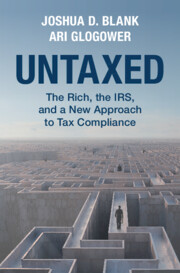Book contents
- Untaxed
- Untaxed
- Copyright page
- Dedication
- Contents
- Acknowledgments
- Introduction
- 1 Tax Noncompliance at the Top
- 2 How the Tax System Addresses Noncompliance
- 3 Means-Adjusted Tax Compliance
- 4 When Are Means Adjustments Fair and Efficient?
- 5 From Theory to Legal Design
- 6 Tax Penalties
- 7 Tax Advice
- 8 The Statute of Limitations
- 9 Tax Information Reporting
- 10 Closing the Tax Information Gap
- Conclusion
- Index
Conclusion
Published online by Cambridge University Press: 22 November 2024
- Untaxed
- Untaxed
- Copyright page
- Dedication
- Contents
- Acknowledgments
- Introduction
- 1 Tax Noncompliance at the Top
- 2 How the Tax System Addresses Noncompliance
- 3 Means-Adjusted Tax Compliance
- 4 When Are Means Adjustments Fair and Efficient?
- 5 From Theory to Legal Design
- 6 Tax Penalties
- 7 Tax Advice
- 8 The Statute of Limitations
- 9 Tax Information Reporting
- 10 Closing the Tax Information Gap
- Conclusion
- Index
Summary
The Conclusion emphasizes the book’s primary argument, that its proposed system of means-based adjustments to the tax compliance rules would more effectively deter tax avoidance and evasion by the rich than would reforms focused solely on increasing the IRS’s funding or on rules targeting specific potentially abusive activities. It notes that the book has provided four practical applications of this approach – as adjustments to tax penalties, penalty defenses, the statute of limitations, and information reporting – but that these examples are just the beginning. The book concludes that its analysis and new approach to tax administration should be relevant to legislators and other tax policymakers, scholars of both tax law and progressivity, and federal and state tax administrators.
Keywords
- Type
- Chapter
- Information
- UntaxedThe Rich, the IRS, and a New Approach to Tax Compliance, pp. 239 - 242Publisher: Cambridge University PressPrint publication year: 2024

